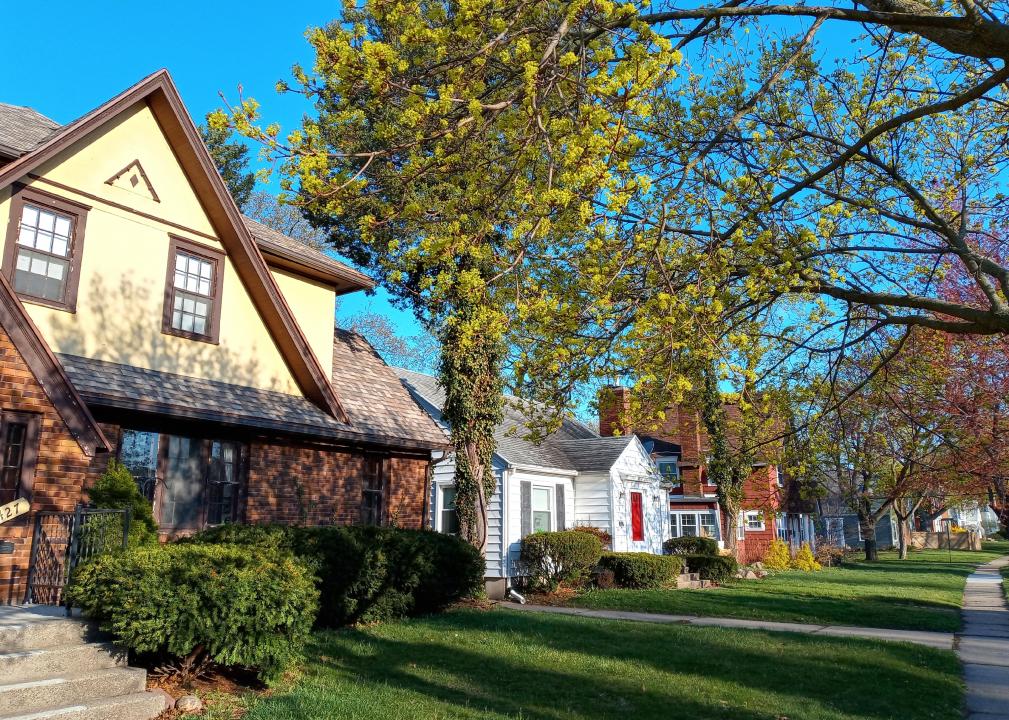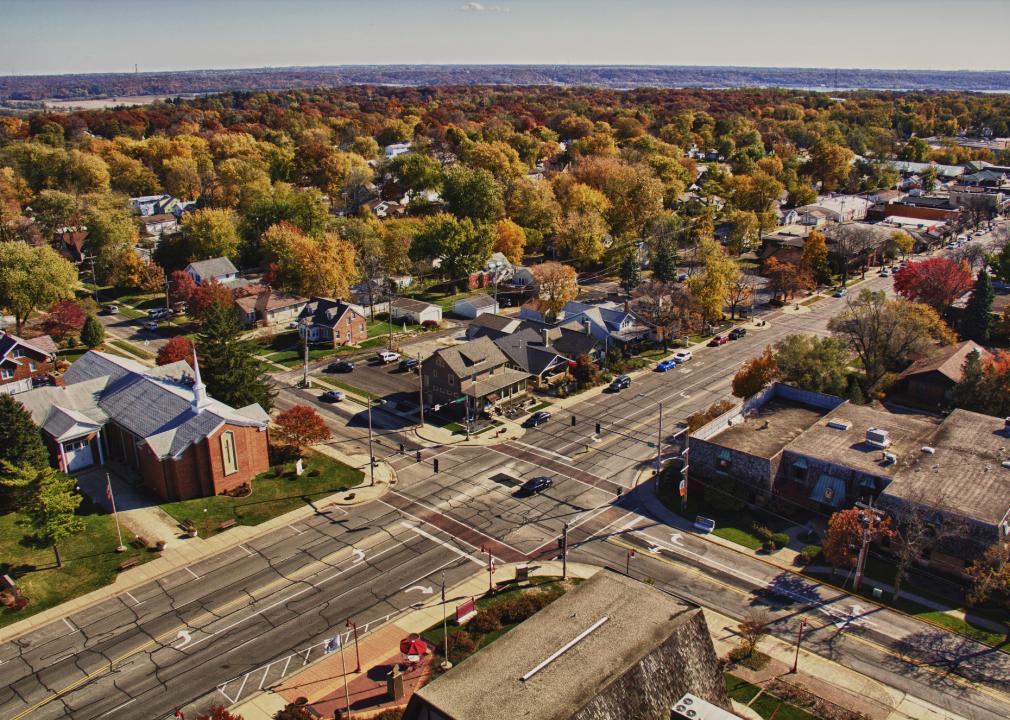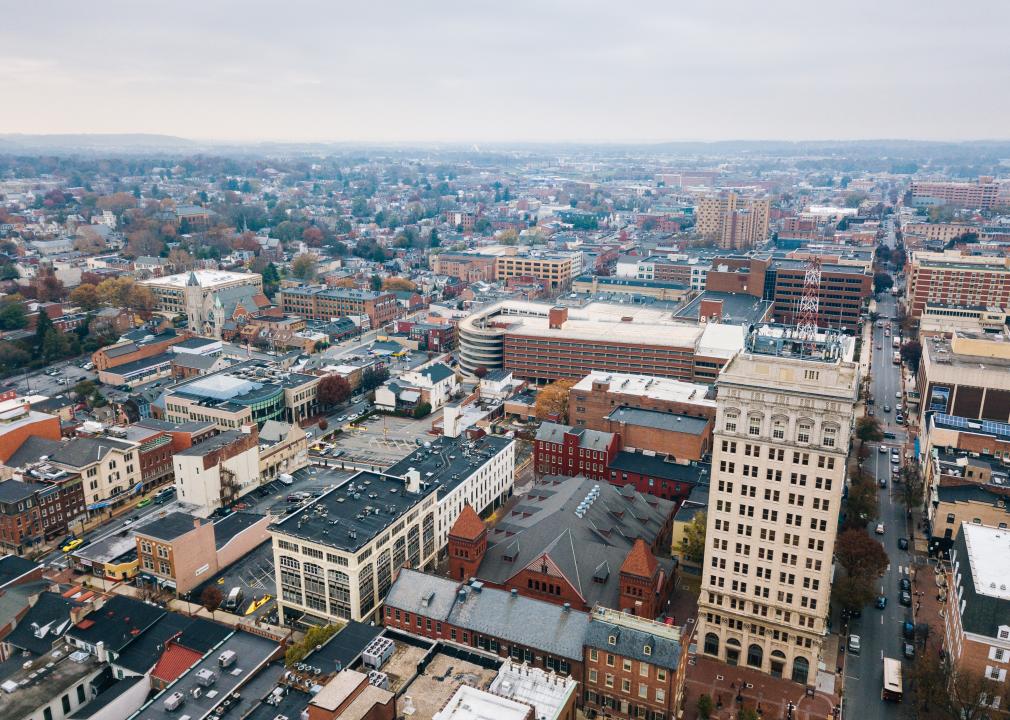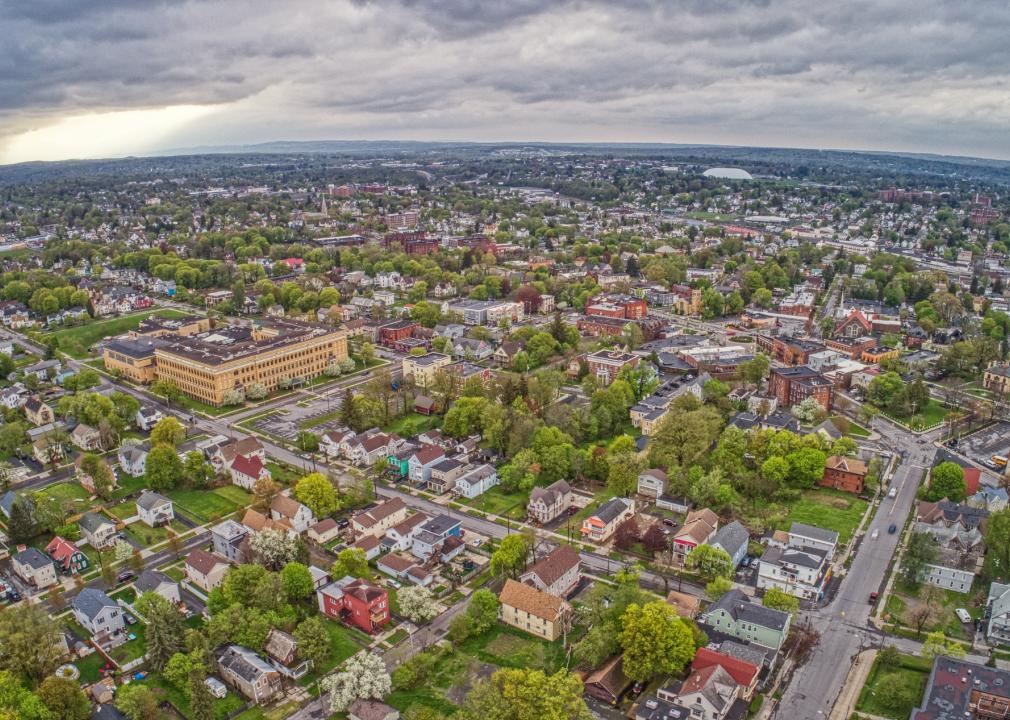Metros where job growth is outpacing new housing supply
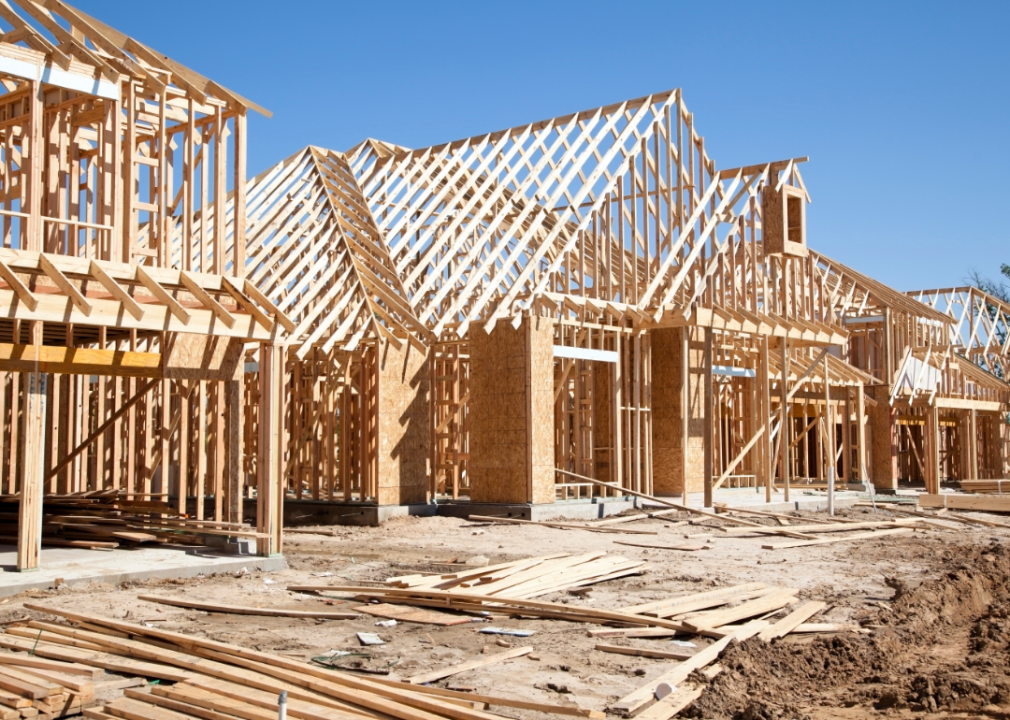
Canva
Metros where job growth is outpacing new housing supply
We’ve all heard tales about how tough it can be to find—let alone afford—housing in cities like New York or San Francisco. When the demand far outweighs the available properties in a given area, costs get artificially driven up and it becomes commonplace for many people to be forced out into the suburbs to find housing, only to be stuck in long commutes to and from work each day.
In a normal market, there’s typically a six-month supply of houses. While we typically think of huge metro areas like the aforementioned cities when we consider housing shortages, the truth is a shortage of housing can happen anywhere and in any type of market. All it takes is a local issue, like strict zoning laws—or one major event, such as a global pandemic—to cause a housing shortage.
A perfect storm of pandemic factors since 2020, including record-low mortgage rates and more mobility for remote workers, have caused widespread housing shortages from busy metropolitan areas like Los Angeles to small cities in the middle of Indiana or Michigan. Supply chain issues, a lack of labor forces, and building materials shortages have exacerbated the issue. Housing shortages have led buyers and investors to pull out all of the stops in order to land housing contracts, making the market even more competitive. Sellers, on the other hand, reap the benefits of getting multiple offers over the asking price.
While nearly every city in the nation has faced some sort of housing crisis in the last year, the 20 metro areas facing the biggest housing shortages today may surprise you. Roofstock used September 2021 metro data from the U.S. Census Bureau’s Building Permits Survey and the Bureau of Labor Statistics’ employment dataset to calculate how many new single-unit housing permits were issued compared to how many new jobs were created in the span of a year, between August 2020 and August 2021. Metro areas are ranked according to how high their job-to-housing permit ratio is, with a higher ratio meaning that job creation in the area heavily outpaces new housing supply. Only areas with total employment of 100,000 or more were considered for this list.
![]()
Henryk Sadura // Shutterstock
#20. Champaign-Urbana, Illinois
– Job-to-housing permit ratio: 25.4
– New jobs added between August 2020-August 2021: 3,000 (108,700 total employment)
– Single-unit housing permits issued between August 2020-August 2021: 118
More than 30,000 University of Illinois undergraduates descend on the Champaign-Urbana metro area each fall for the start of the new school year, snatching up thousands of rentals in the process. The cities are also about 135 miles south of Chicago and 125 miles west of Indianapolis, making each a stellar location for residents who want suburban living with easy city access.
Mihai_Andritoiu // Shutterstock
#19. Allentown-Bethlehem-Easton, Pennsylvania, New Jersey
– Job-to-housing permit ratio: 26.0
– New jobs added between August 2020-August 2021: 15,900 (361,900 total employment)
– Single-unit housing permits issued between August 2020-August 2021: 612
The Lehigh Valley, which is home to the Allentown-Bethlehem-Easton metro area, has experienced a years-long housing supply shortage compounded by the pandemic. Lehigh Valley, which is less than two hours by car from sprawling New York City, has seen an influx of remote workers from New York City. The trend of New Yorkers moving to Lehigh Valley actually preceded the pandemic, but it was kicked into full gear when remote work became the norm for many industries. Between the increased demand for housing by new residents, an uptick in new jobs added to the area, and the lack of new home construction, housing is hard to come by in this area—and has caused would-be buyers to pull out all the stops to compete for homes in this market.
Richard A. McGuirk // Shutterstock
#18. Rochester, New York
– Job-to-housing permit ratio: 26.0
– New jobs added between August 2020-August 2021: 33,100 (508,400 total employment)
– Single-unit housing permits issued between August 2020-August 2021: 1,274
In the upstate New York city of Rochester, a perfect storm of high demand for new construction, along with supply chain issues, rising lumber prices, and other construction-related delays, has created a serious housing shortage for residents. But while a lack of new construction in Rochester plays into the equation, it’s not the only cause of the shortage. New job growth in the area is also having an impact.
Rochester’s job market is thriving across the board, with a diverse mix of industries that includes energy innovation, manufacturing, software and tech, research and development, and health care. Plus, there has been a recent influx of new residents to Rochester from more expensive areas like Boston and New York City as more people are working remotely and seeking affordable real estate in smaller cities.
trekandshoot // Shutterstock
#17. Pittsburgh, Pennsylvania
– Job-to-housing permit ratio: 27.5
– New jobs added between August 2020-August 2021: 41,000 (1,123,600 total employment)
– Single-unit housing permits issued between August 2020-August 2021: 1,492
Several Pittsburgh neighborhoods have been the target of revitalization efforts over the last couple of decades. These campaigns, along with a rapidly growing job market and many people from larger cities like New York and Detroit moving to the quainter metro area, have led to a serious housing shortage in this Pennsylvania city.
Pittsburgh struggled for decades as its two major industries, manufacturing and steel, declined. However, the city’s improved job economy and amenities—along with continued revitalization efforts—have attracted new buyers who desire a good mix of urban and suburban amenities.
Black Lion Cinematography // Shutterstock
#16. Elkhart-Goshen, Indiana
– Job-to-housing permit ratio: 29.6
– New jobs added between August 2020-August 2021: 9,900 (141,800 total employment)
– Single-unit housing permits issued between August 2020-August 2021: 334
The job economy in the Elkhart-Goshen metro area has expanded steadily with new industries in the last decade, including a rapid expansion in travel, tourism, and recreation, as well as a strong manufacturing base for the RV industry. With that growth has come a wave of new residents.
Existing homes are being snatched up by buyers while demand for new housing has overwhelmed area builders, who can’t keep up with heightened demand in recent years. The rising costs of construction materials have only added to the issue. A workforce shortage slowed construction and complicated the issue, as did urban flight and the growing remote-work landscape that drove even more new buyers to the area.
SvetlanaSF // Shutterstock
#15. Urban Honolulu, Hawaii
– Job-to-housing permit ratio: 32.3
– New jobs added between August 2020-August 2021: 34,600 (420,500 total employment)
– Single-unit housing permits issued between August 2020-August 2021: 1,072
Honolulu has had a housing shortage for decades. Unlike the other cities or metro areas on this list, much of the shortage here is due to wealthy buyers purchasing vacation homes that sit vacant for large parts of the year, leaving little inventory for new and existing residents.
Other factors, from low mortgage loan interest rates to the remote-work shift, have also led newcomers to relocate to picturesque Hawaii. This has led to high demand for housing and high prices that incentivize investors to sell—but the rate at which new construction homes are built, the high cost of building materials, and a lack of labor force make it tough for builders to keep up with demand. Another issue frustrating the housing shortage crisis is the fact that Hawaii residents can only develop homes on 5% of Hawaii’s landmass.
trekandshoot // Shutterstock
#14. Los Angeles-Long Beach-Anaheim, California
– Job-to-housing permit ratio: 33.1
– New jobs added between August 2020-August 2021: 394,700 (5,838,900 total employment)
– Single-unit housing permits issued between August 2020-August 2021: 11,932
The southern California metro area that includes Los Angeles, Long Beach, and Anaheim has always been in high demand, but the housing shortage has worsened in recent years.
Home buyers have long headed to coastal California areas for jobs or lifestyle changes. But a lack of new construction in coastal areas, which includes the area of Los Angeles-Long Beach-Anaheim, is adding to the issue with housing, as is the high cost of construction and the high cost of housing in general in this highly sought-after area.
Suburban communities within the Los Angeles-Long Beach-Anaheim area have historically been hesitant to embrace multifamily housing projects, but in Sept. 2021, the state passed a pair of bills aimed at streamlining multiunit zoning for local governments and homeowners. The bills took effect in Jan. 2022, and lawmakers hope it will add much-needed affordable housing options across the state.
Keith Mecklem // Shutterstock
#13. Erie, Pennsylvania
– Job-to-housing permit ratio: 33.3
– New jobs added between August 2020-August 2021: 2,500 (119,400 total employment)
– Single-unit housing permits issued between August 2020-August 2021: 75
Erie’s lack of housing supply is caused by a number of different issues, not the least of which is that many residents simply aren’t listing their houses for sale right now. The houses that do come up for sale are often bought before being officially listed on the market. Building material shortages across Pennsylvania (and the nation) during the pandemic have worsened the crisis, as has the lack of workers to help erect the new construction homes in Erie. With fewer new homes being built and a steady job market enticing new residents, Erie’s housing shortage has left would-be homebuyers and renters to compete with dozens of other buyers and renters for what little housing is available.
Ryan DeBerardinis // Shutterstock
#12. New York-Newark-Jersey City, New York, New Jersey, Pennsylvania
– Job-to-housing permit ratio: 33.8
– New jobs added between August 2020-August 2021: 463,600 (9,163,100 total employment)
– Single-unit housing permits issued between August 2020-August 2021: 13,715
Unlike smaller metros and cities that saw new residents flooding in from more populous cities, the New York-Newark-Jersey City area saw a mass exodus of residents that caused housing prices to drop significantly. Eager buyers scooped up property with the help of record-low mortgage rates and home prices. That, coupled with high land prices, skyrocketing building materials prices, and limited space for new construction led to shortages of housing for both buyers and renters alike in this area.
The recently ended moratorium on foreclosures in New York also kept a lot of housing inventory from being listed, as owners who would have otherwise lost their homes to banks were insulated from losses until the end of August 2021.
T-I // Shutterstock
#11. Lansing-East Lansing, Michigan
– Job-to-housing permit ratio: 36.6
– New jobs added between August 2020-August 2021: 5,300 (215,900 total employment)
– Single-unit housing permits issued between August 2020-August 2021: 145
A lack of both existing homes for sale and new construction left the Michigan metro of Lansing-East Lansing struggling to deal with a crushing housing shortage. Current homeowners are wary of listing their homes out of fear that new houses won’t be available to buy or rent following sales.
More recent construction projects aren’t just limited in scope but have been primarily concentrated in Lansing’s higher-priced suburbs, leaving other parts of the area without new-build homes. Builders in Lansing-East Lansing are also struggling to find enough construction workers to complete the projects, and a national shortage of skilled labor is adding to the slow addition of new construction in the area.
The fact that Lansing is home to Michigan State University, which brings in more than 50,000 temporary college students-residents each fall, doesn’t help; with each new semester, the housing inventory that does exist is stretched extremely thin by college students in need of housing.
Jacob Boomsma // Shutterstock
#10. Springfield, Illinois
– Job-to-housing permit ratio: 40.0
– New jobs added between August 2020-August 2021: 3,600 (105,200 total employment)
– Single-unit housing permits issued between August 2020-August 2021: 90
With few home construction projects in the area, buyers in Springfield are limited to the existing inventory.
During the pandemic, new residents helped stretch inventory thin, following housing trends across the nation. With an increasing population and the state of Illinois building fewer than 10,000 new single-family homes on average each year, there is a dearth of new housing.
In fact, between the lack of permits, the high cost of construction materials, the difficulty with finding construction crews, and the lower-than-average income in the state of Illinois, it may not make financial sense for builders to construct new homes in Springfield, as they would likely be out of the price range for many buyers in this area.
Maks Ershov // Shutterstock
#9. Santa Maria-Santa Barbara, California
– Job-to-housing permit ratio: 42.7
– New jobs added between August 2020-August 2021: 7,000 (184,200 total employment)
– Single-unit housing permits issued between August 2020-August 2021: 164
The Santa Maria-Santa Barbara metro area has exploded with new residents in recent years, and the population in this area is expected to continue to grow over the next few decades. As new residents pour into the coastal area, the existing home supply is further depleted and newly constructed homes aren’t keeping up with the demand.
Adding to the issue are a few other factors, including slow housing turnover and a diminishing supply of distressed properties. Additionally, local governments have not met the increasing need for affordable and low-income units. The high cost of land here also exacerbates the issue, as do high costs of construction materials and a lack of work crews to construct new homes in the area.
Virrage Images // Shutterstock
#8. Duluth, Minnesota, Wisconsin
– Job-to-housing permit ratio: 50.0
– New jobs added between August 2020-August 2021: 6,000 (130,600 total employment)
– Single-unit housing permits issued between August 2020-August 2021: 120
In 2020, Duluth gained a total of 150 housing units, but it still is not enough to meet the projected demand. At many points during the last decade, the housing inventory was further depleted by more houses being demolished than built.
The lack of new construction wasn’t a major issue until the pandemic hit and Duluth became a hot real estate market, with buyers flocking to purchase the few properties that were on the market. Duluth leads the state of Minnesota in job growth—a fact that encouraged even more people to move. Finally, several colleges regularly bring in students who need housing in the area.
trekandshoot // Shutterstock
#7. Oxnard-Thousand Oaks-Ventura, California
– Job-to-housing permit ratio: 81.8
– New jobs added between August 2020-August 2021: 12,100 (296,200 total employment)
– Single-unit housing permits issued between August 2020-August 2021: 148
One of the most notable causes of the massive housing shortage in California’s Oxnard-Thousand Oaks-Ventura metro is the affordable housing shortage in Los Angeles and surrounding areas. More new residents pour into Ventura County from Los Angeles County than anywhere else, and the new arrivals are helping to drive a shrinking housing market in the area.
New housing construction in the Oxnard-Thousand Oaks-Ventura has been on a downward trend due to laborious permit processes and high construction costs, and the lack of newly constructed homes has been worsened by COVID-19. Other issues, like investors picking up housing for short-term rental or vacation properties, further deplete the housing supply here, making it difficult for new or existing residents to find housing, affordable or otherwise.
Joshua Benjamin Francis // Shutterstock
#6. Peoria, Illinois
– Job-to-housing permit ratio: 87.0
– New jobs added between August 2020-August 2021: 4,700 (165,400 total employment)
– Single-unit housing permits issued between August 2020-August 2021: 54
Housing in Peoria is hard to come by, which is somewhat surprising given that an abundance of homes was listed on the market in 2019, after Caterpillar corporate headquarters moved out of the area. At that point, more homes were on the market than ever in Peoria, which put a wrench in plans for newly constructed homes in the area. But when the pandemic hit, the surplus of existing homes—which were extremely affordable—were quickly snapped up by buyers looking to capitalize on the low mortgage rates and Peoria’s high rental market returns.
With the high price of building materials and lack of available work crews, new construction in Peoria can’t keep up with the demand. Nor can it compete with the affordable prices of the existing homes, which is causing even more issues for would-be buyers and renters in the area.
Christian Hinkle // Shutterstock
#5. Lancaster, Pennsylvania
– Job-to-housing permit ratio: 111.4
– New jobs added between August 2020-August 2021: 7,800 (248,900 total employment)
– Single-unit housing permits issued between August 2020-August 2021: 70
Lancaster isn’t a huge metro area, but it’s situated 100 miles or less from several that are—including Baltimore, Philadelphia, and Washington, D.C.
As residents fled areas like New York City and Philadelphia, many came to Lancaster and quickly depleted the existing home supply in the area. There is also limited space in the area for builders to construct new housing developments. While some new construction projects are underway, demand for housing remains high. Other issues, like a lack of any new construction of rental housing being built over the last several years, only add to the issue.
esfera // Shutterstock
#4. Modesto, California
– Job-to-housing permit ratio: 213.2
– New jobs added between August 2020-August 2021: 8,100 (180,800 total employment)
– Single-unit housing permits issued between August 2020-August 2021: 38
New residents relocating from more pricey and populated areas of northern California have caused a housing supply strain in Modesto for years, with the uptick in demand during the pandemic exacerbating the issue. Modesto’s slow permitting process makes things even more complicated, and the increasing cost of building materials like lumber and steel, as well as the difficulty of obtaining certain materials, means new construction can’t keep up with the increased demand.
Modesto is focused on supplying more affordable housing to residents—but without the materials, builders, and crews required, the new home supply can’t meet the need of the Modesto market. Many projects that have been permitted are delayed.
Jacob Boomsma // Shutterstock
#3. Utica-Rome, New York
– Job-to-housing permit ratio: 264.7
– New jobs added between August 2020-August 2021: 4,500 (120,200 total employment)
– Single-unit housing permits issued between August 2020-August 2021: 17
The Utica-Rome metro area was, at one point, primarily industrial, with lots of manufacturing and factories. The region has become a tech mecca over the last few years, which led to a boost in the economy and housing issues for new and current residents.
The recent tech boom in the area led to plenty of job opportunities, but the existing housing supply is limited and the local government was hardly focused on adding new homes to the inventory prior to the pandemic. Just a handful of single-unit permits have been issued to builders in Utica-Rome over the last few years, and new construction can’t keep up with demand caused by the pandemic buying frenzy and the new residents relocating to the area for work.
Anh Luu // Shutterstock
#2. St. Cloud, Minnestoa
– Job-to-housing permit ratio: 312.5
– New jobs added between August 2020-August 2021: 2,500 (105,400 total employment)
– Single-unit housing permits issued between August 2020-August 2021: 8
The population in St. Cloud has exploded in recent years, thanks to employment opportunities in the health care, manufacturing, retail, and business and financial sectors. The growth in population, lack of new construction, and high demand for housing during the pandemic have created a severe housing shortage throughout the city.
New construction in St. Cloud is likely out of the price range for most low- to moderate-income residents, due to the increasing cost of building materials. Home inventory in this metro is further stifled by homeowners who are reluctant to list their properties for sale without a way to find an affordable replacement. That, coupled with a lack of new housing permits being issued by the local government, has led to this city being home to one of the worst home shortages in the nation.
Nolichuckyjake // Shutterstock
#1. Hickory-Lenoir-Morganton, North Carolina
– Job-to-housing permit ratio: 442.9
– New jobs added between August 2020-August 2021: 6,200 (152,900 total employment)
– Single-unit housing permits issued between August 2020-August 2021: 14
The four-county Hickory metro area—which includes Hickory, Lenoir, and Morganton—has the highest concentration of homes in the state that were built before 1980 and the lowest volume of newly constructed homes to offer residents. And there are a lot of new residents to accommodate, thanks to the area’s focus on revitalization and job growth after the loss of its two main industries: furniture and textile manufacturing.
Without newly constructed homes to fill in the gaps, new and existing residents are left to compete over the existing housing inventory, which is severely lacking due to homeowners being hesitant to list their homes for sale without other options in the area.
This story originally appeared on Roofstock
and was produced and distributed in partnership with Stacker Studio.









